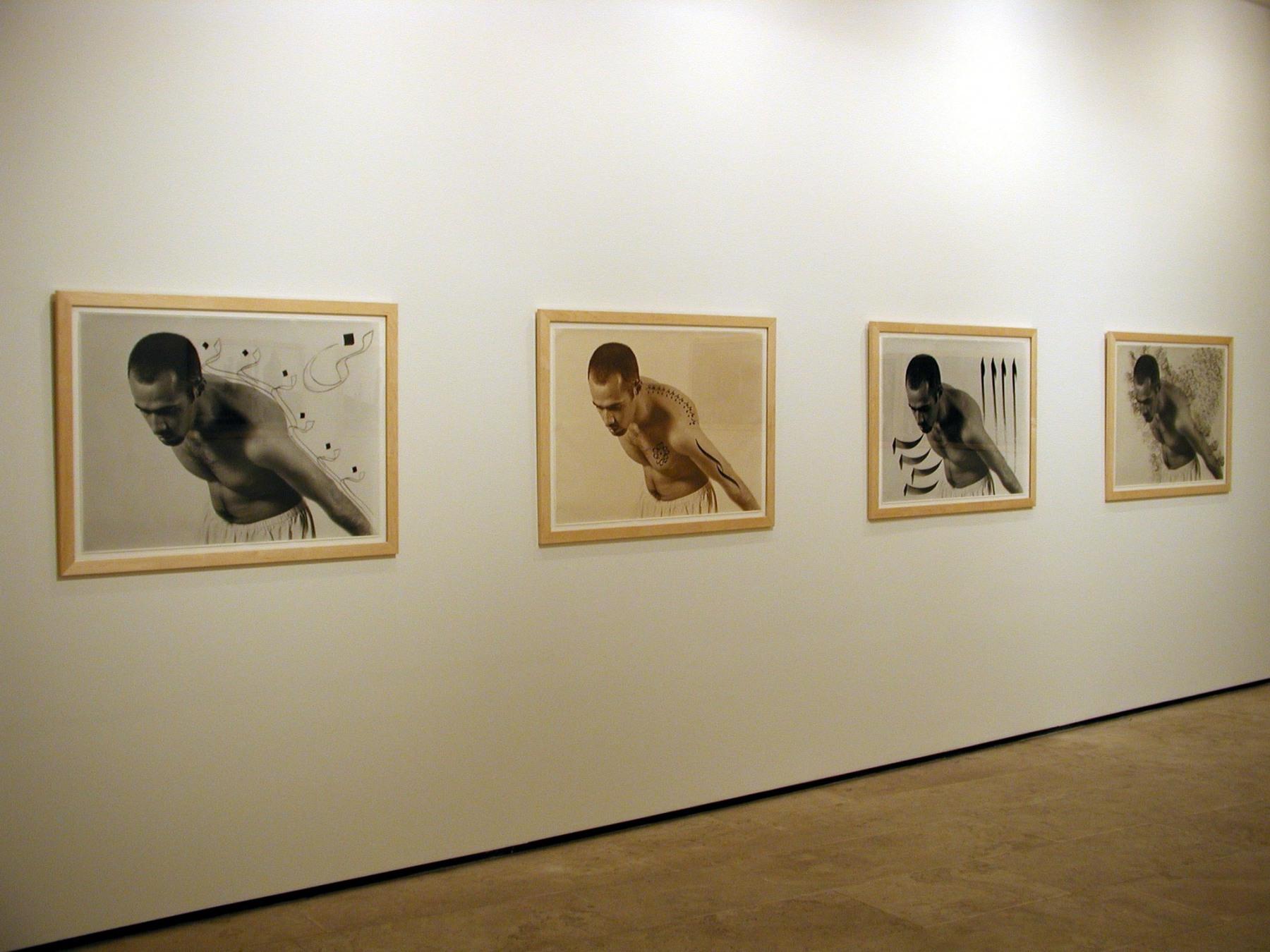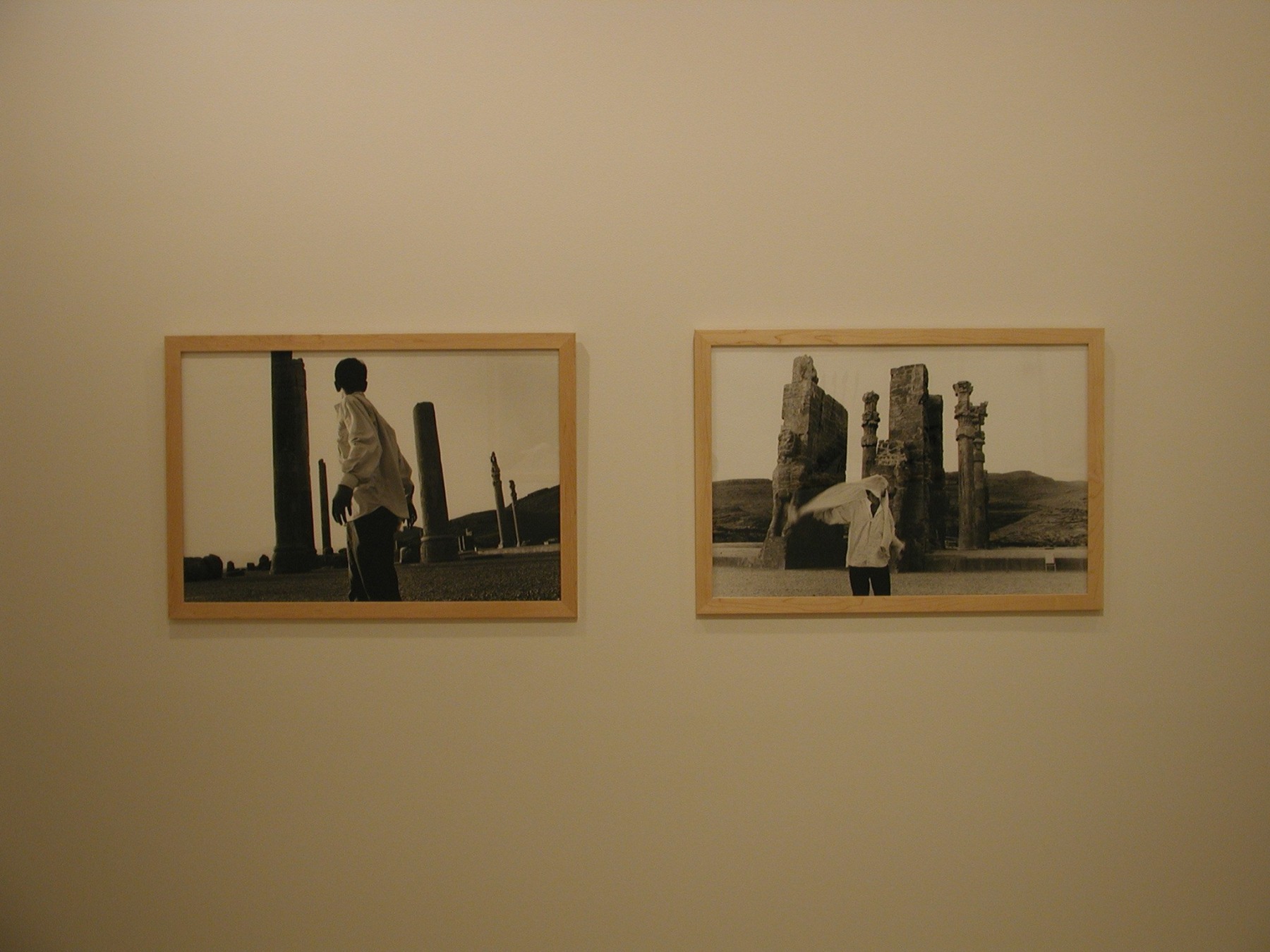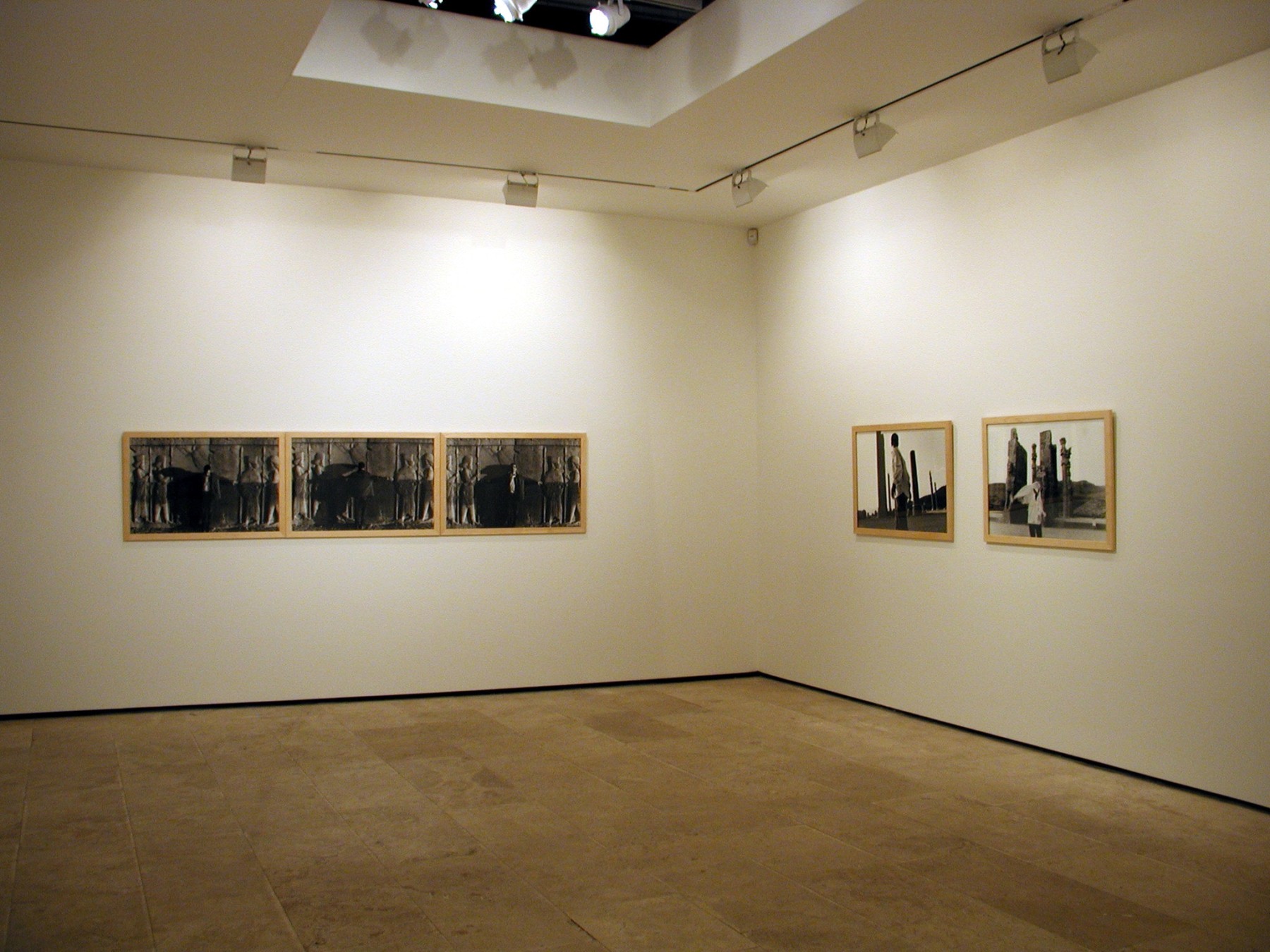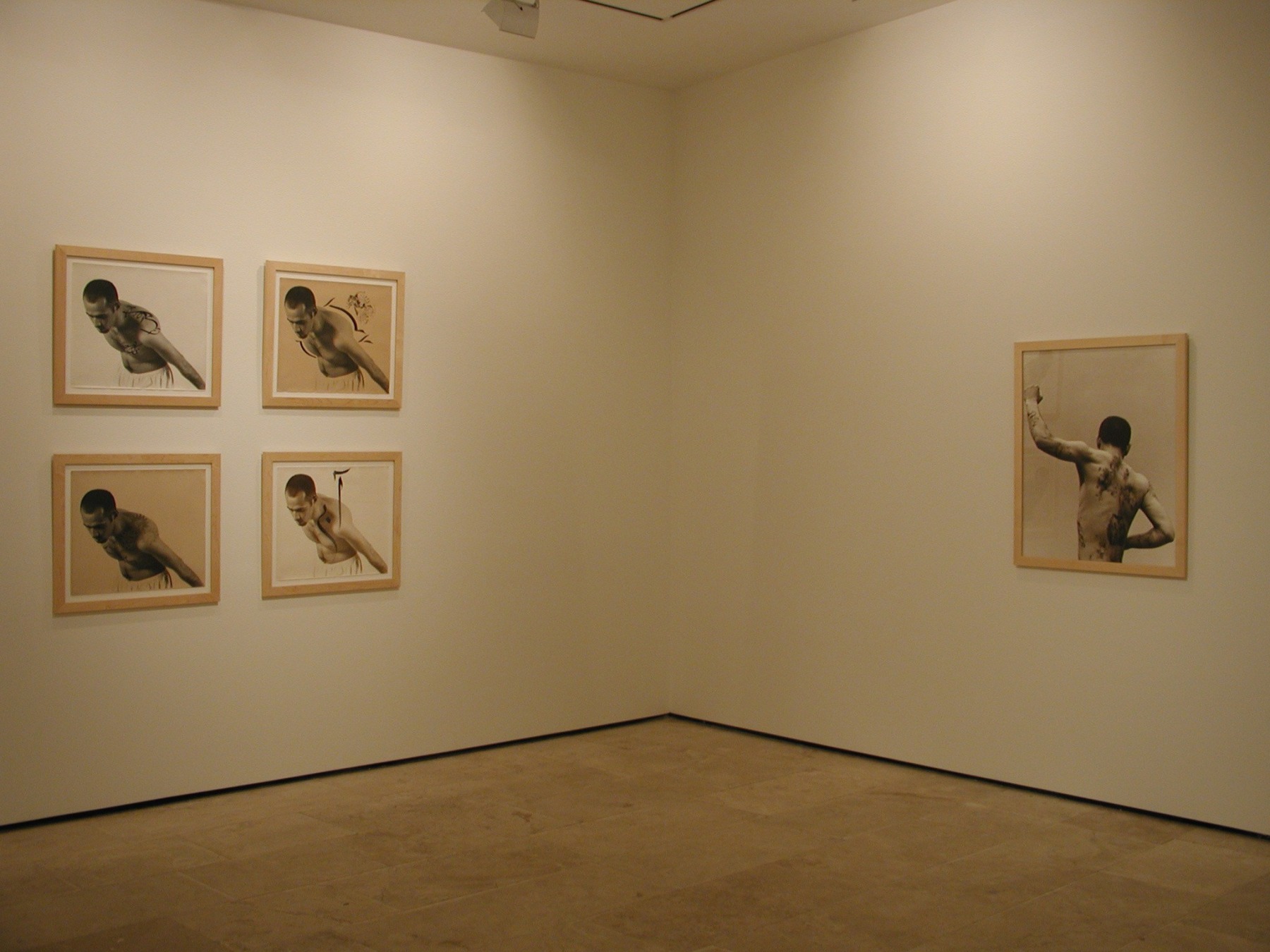New York,
501 W 24th Street New York, NY 10011
10 January 2004 - 14 February 2004
Lehmann Maupin would like to announce an exhibition by Sadegh Tirafkan. This will be Tirafkan’s first exhibition at this gallery.
Born in Iran in 1965, Tirafkan trained as a photographer at the University of Fine Arts in Tehran. Since the late 1980s, he has participated in numerous solo exhibitions and group shows, primarily in Tehran and Paris.
Tirafkan’s works offer an eloquent meditation on modern Iranian man’s relationship to his past and on his search for a meaningful identity in the present. Identity, history and memory have been central concerns in the work of non-western artists since the era of colonialism. Tirafkan, frequently using himself as a model, revisits and reinvents these themes in his series of enigmatic yet visually compelling photographs.
In the Persepolis series, Tirafkan examines the Iranian male identity by framing himself within the monumental broken columns and burnt ruins of what was once Iran's greatest imperial city, destroyed by Alexander the Great in 330 B.C. Tirafkan uses this locale as a symbol of Iran’s past glory and of the ongoing struggle to preserve traditional Iranian culture.
In selections from his two series Body Curves and Body Signs, Tirafkan superimposes block stamping, calligraphy, and tattoos on images of the male nude. In the west we are familiar with the Islamic tradition of veiling women but less aware of the equally powerful taboo against the depiction of the nude and most especially the male nude. In these images of astonishing formal beauty and originality, the body is both revealed and hidden by the calligraphic signs and stamps. Words spelling fire, water, renewal, secrets, and single letters evoke the hidden language of Tirafkan’s psyche while the stamps represent symbols of Iranian popular culture and memories of Tirafkan’s childhood. The imagery in these series was inspired by ancient Iranian tattooing practices as well as by wooden block print stamps used to decorate cloth. But for Tirafkan “Text”the blocks have been used here to stamp the human form. Flesh is the canvas branded by culture.”




